Josh Baron Talks ‘Eyes Of The World: Grateful Dead Photography 1965 – 1995’ Book
By Ryan Dembinsky Nov 27, 2017 • 11:15 am PST
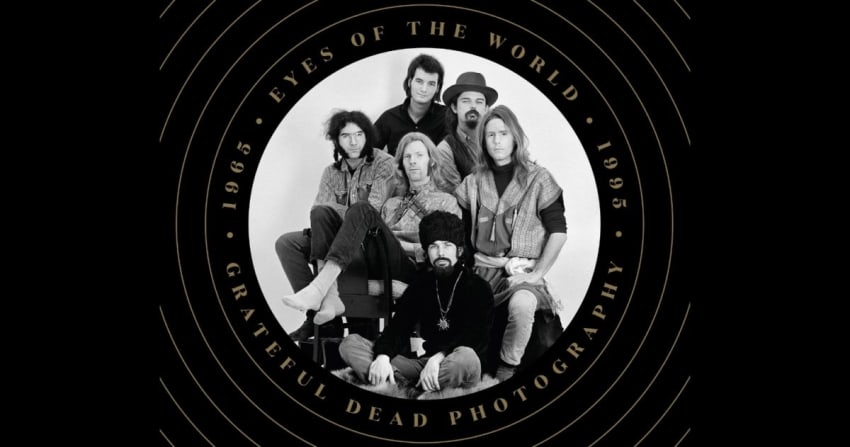
Words By: Ryan Dembinsky
“I’ve got a warehouse full of great ideas in Kentucky.” It’s the kind of response you’d expect to hear as a first-time fiction novelist or perhaps an entrepreneur seeking a bank for a loan to start up a new music venue, but not as the longtime former editor-in-chief of Relix working in tandem with one of the most well-known photographers is music today on a coffee table book called Eyes of the World – Grateful Dead Photography 1965 – 1995 comprised of amazingly high-quality images of the Grateful Dead.
Yet, when speaking with a publisher that photographer Jay Blakesberg had worked with in the past, Josh Baron received these exact words of rejection. How could they not get it? This is something that had never been done before: a book of large-scale images of the band spanning every period from 1965 through 1995, era by era, all in impeccable quality. Deadheads, more so than maybe any other fanbase, have demonstrated a willingness to spend money on productions of large magnitude as long as the content is unique and the quality is top-notch.
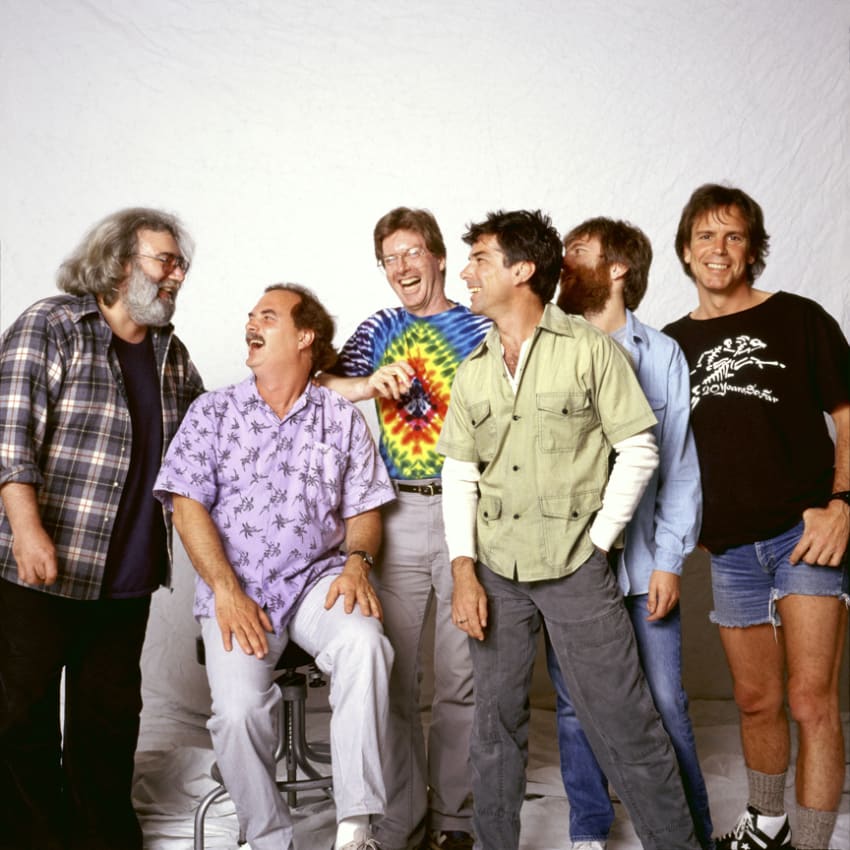
Photo from 'Eyes Of The World' © Michael O'Neil
The publisher finally did get it though. In fact, he was a Deadhead. The problem was the cost. Licensing all these images would require a small fortune — not to mention the production costs, printing and promotion of the books. Just do the math. Baron and Blakesberg managed to contact over 100 photographers of the Grateful Dead, ultimately selecting work of 61 for a total of 220 photographs across 272 pages. They are some of the top names in music photography, so if you apply even $1000 in licensing fees per image, you’re already talking about a hefty price tag for a book in an era where physical copies of almost everything are in secular decline.
Nevertheless, Josh and Jay pounded the pavement in their own networks and raised the money the old-fashioned way, themselves and published Eyes of the World – Grateful Dead Photography 1965 – 1995 on Jay’s own imprint Rock Out Books.
The D.I.Y. method certainly adds layers of stress when it comes to borrowing money from friends and family, figuring out how to promote the material, and effectively service the logistics of mail order and in-store distribution. The duo printed an minimal 7,000 copies and they are already looking likely to run another 3,000. Once they hit 10,000, that’s all she wrote. It’s over. Beyond that level, things get complicated with the licensing contracts and fees, so given the rapid speed of pre-sales and early purchases before the holiday season has even begun, this is looking like it will become a noteworthy collector’s item in relatively short order.
I caught up with Josh Baron discuss to the trials and tribulations of turning this great idea into something more than a crate in a warehouse in Kentucky. It’s a beautiful book capturing large scale images of one of the great bands in American rock history. No longer are reproductions of images in Grateful Dead history confined to those tiny middle picture sections in the written biographies on the band – or worse on the internet. Now there is a high-quality display book devoted entirely to the images in pristine quality and on the grandest scale.
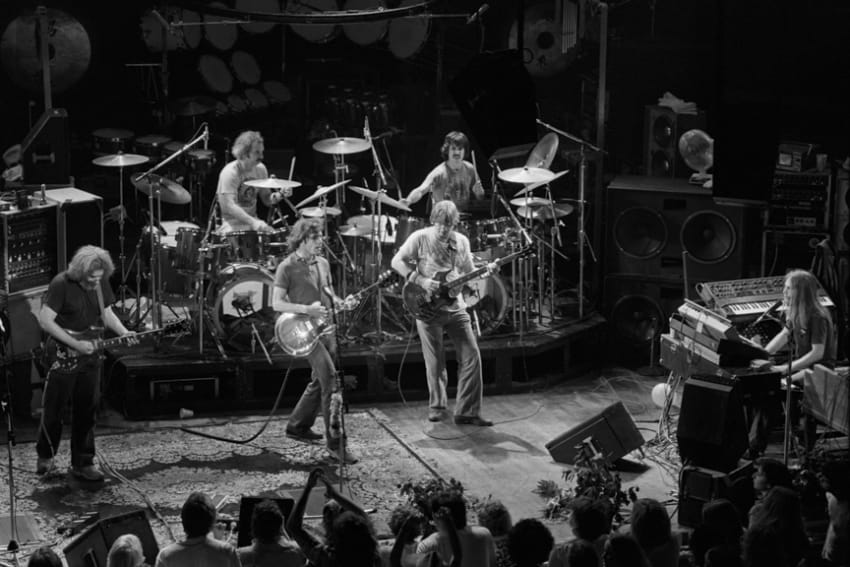
SAN FRANCISCO, CA-OCTOBER 2: The Grateful Dead perfom at the Warfield Theater in San Francisco, CA on October 2nd, 1980. (l-r): Jerry Garcia, Bill Kreutzmann, Bob Weir, Phil Lesh, Mickey Hart, Brent Mydland. (Photo by Clayton Call/Redferns)
JamBase: Starting off relatively high-level, between you and Jay how did the two of you decide to get together and source all of these amazing images and ultimately put together this comprehensive photo diary of the different eras of the band?
Josh Baron: Well, I was at Relix magazine for about 14 years, during which I was the editor-in-chief for eight or nine of them. Before that, I was the executive editor. During that time, Jay and I worked together many times over many years. In fact, I believe Relix was the first place that Jay got paid to have one of his photographs published.
Anyway, I had been thinking about this project for a number of years and as editor of Relix, I’ve seen basically every Grateful Dead book you could ever imagine cross my desk.
Jay had put out a photography book back in the day. Herbie Greene also put out a photography book. And there were some books about the Grateful Dead that incorporated a lot of text and pictures particularly Playing In The Band done by Peter Simon and The Grateful Dead Family Album by Jerilyn Brandelius, which had pictures and text, but it wasn’t this definitive collection of big images and I was like, “Why doesn’t this exist?”
Of all the bands out there, here’s an audience that has demonstrated a proclivity to spend money on well-produced products like the Europe ’72 box set. There’s almost this hunger for it. At first, I was thinking, “Am I crazy?” But I looked, and there really wasn’t anything like that.
So, I reached out to basically five photographers: Herbie Greene, Peter Simon, Baron Wolman, Jay Blakesberg and a guy named Ed Perlstein. I basically said, “Hey guys I’m thinking about doing this project, but first, am I crazy? And second, if I do it, would you guys be willing to participate?”
Literally within about 24 hours, they all said “yes, it’s a great idea and I would love to see it happen.” Jay responded back as well and said, “Hey, let’s talk about this. I’ve sort of been thinking about a book like this too, but you know, let’s talk about it.”
So, we talked and he informed me that the licensing for something like this is going to be really expensive with all of these images, but [he has] a friend at a major publisher we could talk to that might be interested — or at the very least we could get that sort of first benchmark for what we are up against. So, we called his buddy over at Inside Editions Books, which is out of San Francisco, and they have done some of Jay’s books. We spoke to him and again, while he was a huge Deadhead and he loved the project, he was like, “Guys, it’s a very expensive book and I’m in book publishing.” And then he said something really prescient which I’ll remember for many, many years. He said, “I got a warehouse full of great ideas in Kentucky,” meaning there are a lot of unsold books that were supposed to be great, but ultimately were never sold.
So, we were like, “You don’t understand, it’s the Grateful Dead, you get it man. Don’t you?” He said, “Sorry, even if it was up to me, and it’s not up to me, I couldn’t do it.”
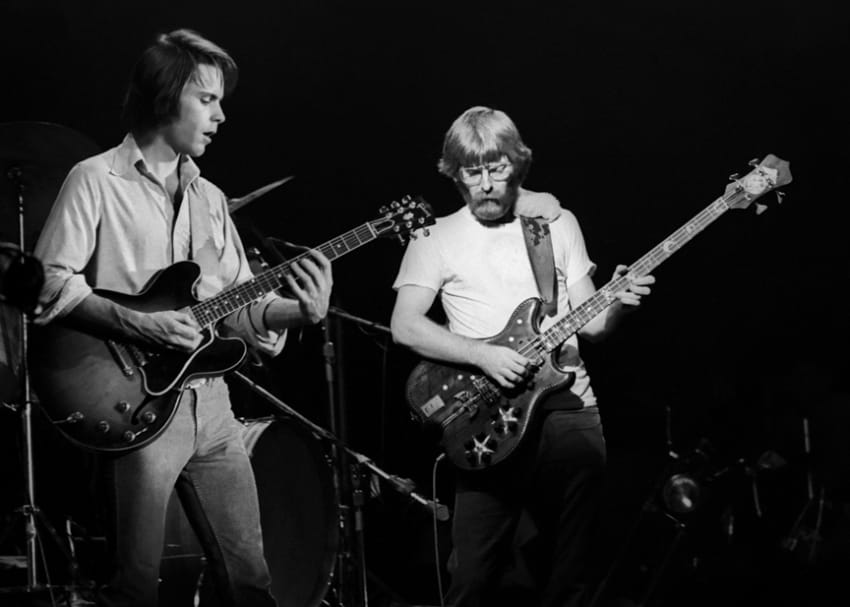
Photo from 'Eyes Of The World' © Larry Hulst
JamBase: I guess getting this thing off the ground was no easy feat? What did you do from there?
Josh: Jay and I spoke and I said I don’t want to do a Kickstarter campaign. What if I go raise the money myself, can we put it out on your imprint, Rock Out Books? Jay said, “Sure, I would love to.” I managed to raise the money very quickly, which was sort of surprising to me, but all it took was two conversations and then we were off.
JamBase: Is that disclosable who was involved in that?
Josh: It’s not. It’s not like somebody of note though. I went to a wealthy Deadhead that I’ve known for years and said, “Hey man, here’s what we’re kind of looking at, what do you think?” So he said, “Look, I don’t want to invest, how about I just give you the money and you can just pay me back with interest?”
I was like, OK that’s not a bad idea, but I asked somebody else who was a family member who is very successful and I asked him if he thought it was a good deal and he was like, “Nah it’s really not a great deal. The interest is kind of high. I could do it for you if you want?”
I told him I wanted to be very clear that I wasn’t asking him to loan me the money, but he said it was really no problem and he gave us much more reasonable numbers. So, there you have it. It was essentially a family member who made it happen.
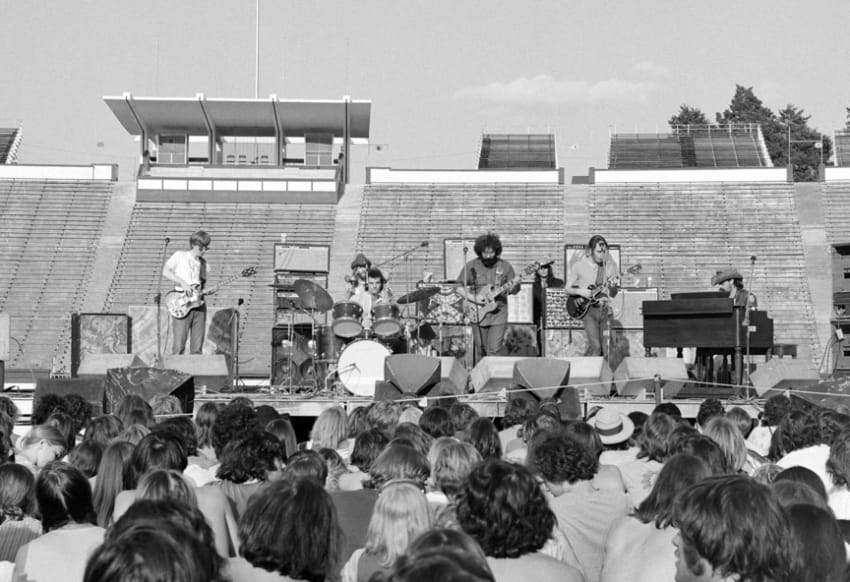
Photo from 'Eyes Of The World' © Ric Carter
JamBase: I don’t want to pry into your numbers or overstep my bounds, but if you don’t mind discussing it, is this like a seven-figure project or six figures or what are we talking about here?
Josh: It’s a six-figure project. We’re not talking about a life wrecking deal or anything, but it’s a couple hundred-thousand-dollar project.
JamBase: I would think you’ll recoup that relatively easily. The book is truly amazing. It’s beautiful and it’s a perfect coffee table book. I come from a family where my in-laws at every gift giving occasion are giving each other all sorts of these types of big image books, whether they are artists or designers or what have you. They are not necessarily music related, but there is such a huge audience for these types of books, especially as you get older, they make nice little accouterments that fit in with the overall interior design of a house or apartment.
Josh: I can tell you this. We initially printed 7,000 books and we are very quickly selling them and we are not even at the holiday season, so we will probably end up printing 3,000 more and wind up with 10,000. Once the 10,000 are done, that’s it, we’re done. We’re not going to go past that. Unless there is some crazy amount of demand, it doesn’t make financial sense to go beyond that because we would have to start repaying photographers like 50 percent of their fee. And it’s a ton of work, doing D.I.Y. stuff.
JamBase: How did you go about sourcing the photographs and tracking down all the different photographers?
Josh: I spent about six to eight months, just me, not Jay, going down any rabbit hole I could find for Grateful Dead images. I looked everywhere. Obviously, you have to spend a ton of time online. I ordered like 30 books about the band and looked for any photography that might be cool and contacted that photographer. I went through the Relix archives. I kind of went anything and everything to find as many photographers as possible and we reached out to as many photographers as we could.
By the way, this brings me to an interesting point. While the Grateful Dead knew we were doing the project, because we were reaching out to the representatives of the photographers and the representatives let the band know, we didn’t actually need their permission. The photographers retained the rights to their photographs so they are free to license them to whoever they want. At the end of the day, we collected images from just over 100 photographers and we ultimately included 61 of those photographers in the book.
We put some parameters around what was to be included, such as the fact that we only incorporated images from the years 1965 to 1995 – in other words it doesn’t go past Jerry. There were no side project images. For instance, Herbie Greene’s well-known image of Jerry on Broadway looking kind of like a magician, that wasn’t included because it was for a solo show. If they were shot offstage and it was sort of a solo shot, those were fine.
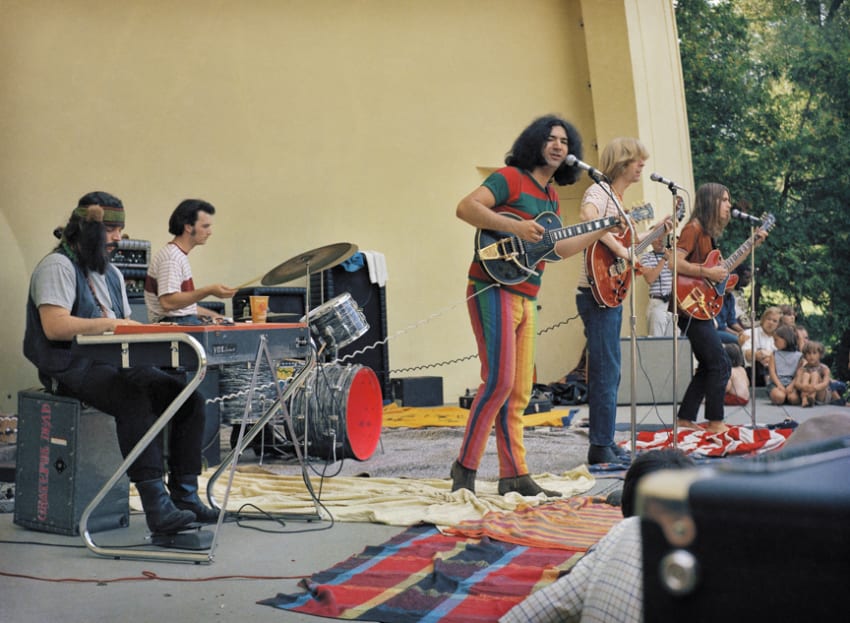
Photo from 'Eyes Of The World' © Leni Sinclair
JamBase: At this point you have a hundred photographers and god knows how many images. How did you narrow it down and organize it?
Josh: Jay and I worked up almost 40 versions of the book. We did it by decade obviously. My vision very early on was the ultimate product. I wanted big pictures, because ultimately even as Deadheads and fans, we have never seen most of these pictures at this scale and at this level. A lot of these images are being printed for the first time. But, moreover, we live in a digital age where most of things we do is on a computer screen, so that’s the way we’ve seen them. That’s especially true for the younger Deadheads. They have only seen these images on a computer screen, and I felt it was important to really try to reproduce these images in the format that they were shot in. These were all film. Even in 1995, digital was not a thing yet.
At the end of the day, give these photographers credit because this was a pain to get these things scanned. Just because something is 300 dpi and we can run it in a magazine, that does not mean it’s good enough to run at this size and in a book. A lot of people Fed-Ex’ed their original negatives directly to Jay to get the proper scans. That is amazing if you think about it. Fortunately, Jay is a well-known photographer and people know they can trust him with their images.
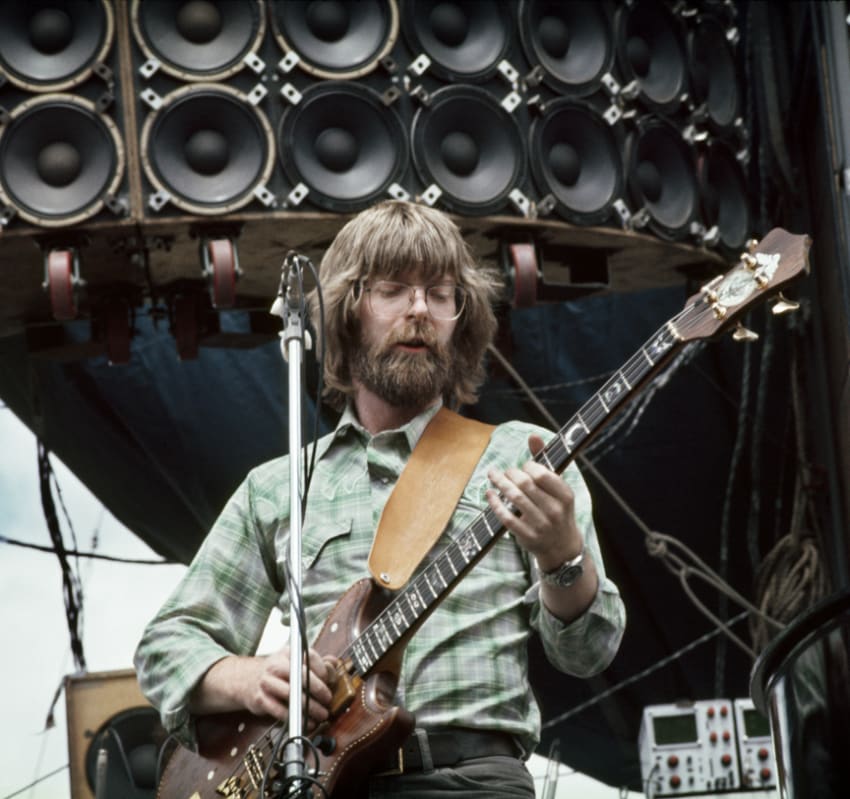
Photo from 'Eyes Of The World' © james lee katz
JamBase: Were there certain eras that were more challenging to source given the habits of the various band members or the size of the entourage or simply just the amount of time that has passed that made it tough to track down people and images from certain points in time?
Josh: Yeah, you can actually see that natural progression in the book. In the ’60s, the band is pretty up for having their pictures taken and they are having fun and it’s engaging. As they got older, they were notorious for not liking photo shoots. They were constantly goofing off and being very difficult subjects for photographers to work with. Then once you get into the ’80s, you stop seeing large scale access and that candid backstage intimacy. After that, it was live images and a few portraits. What they did do, which was critical particularly for Jay as that’s how he kind of got his start, is let people shoot the show and they even let fans bring cameras to the shows. Jay didn’t have a photo pass for years and some of his best stuff comes from those days in his early 20s when he was on tour and just taking pictures as a fan.
JamBase: What years were Jay’s shots mostly in the book?
Josh: The bulk of Jay’s work we in the ’80s and into the ’90s. He first started shooting in the late ’70s, but the bulk are from the ’80s.
One other thing to point out is that we wanted to focus the bulk of the book around the stage. Certainly, there is a whole other book that could be made about the culture of the Grateful Dead, but for this book — while Deadheads and the subculture was tempting — we decided we had so much material already that we had to cut it somewhere.
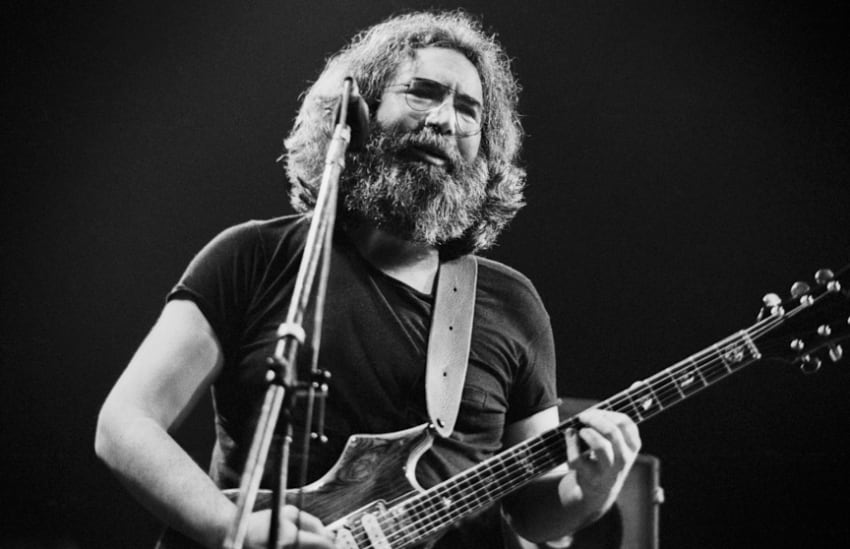
Jerry Garcia photographed in San Francisco, CA December 28, 1979 © Jay Blakesberg/Retna LTD.
JamBase: In getting to meet so many different photographers and getting a sense for their antics in the new Long Strange Trip movie like when they had the film crew in London, did you happen to come across any funny new stories behind any of the pictures or the band in general?
Josh: The sense that I got in general in working with a lot of the photographers is that they really didn’t like to do the group shoots very much, so when you’d get them together, that would be when they would be hard to deal with and they’d start goofing off and making trouble. It was all in good fun, but this stuff gets pretty stressful for photographers when you’ve got the chance to work with a magazine for the first time and you’re shooting your favorite band and you’re at risk of getting nothing. By-and-large though, when you get them alone, the general feeling is that they would cooperate just fine. It was really just the group shots.
JamBase: What was the material that you put the most effort into tracking down or had to do the most investigative work so-to-speak?
Josh: OK, I’ll tell you one cool story. There is one that took some real time. The guy’s name is Alvan Meyerowitz and he has two images in the book from the Lindley Meadows show in 1975. One is of Keith Godchaux and Bill Kreutzmann just kind of hanging out and the other one is of Phil Lesh and Owsley Stanley and Phil has his hands on Owsley’s shoulders. It’s a very candid picture that was just in the moment.
Some of this stuff was on agency sites like Getty or something like that, but I never used an agency. I always went directly to the artist or the estate who was handling the pictures. I couldn’t find anything about Alvan online or anywhere in print and I didn’t know if he was even alive, but finally I found a video that a filmmaker named Doug Walker had made of Alvan just walking through his apartment and going through things. Alvan is not in great health and he’s kind of a hermit. It was really a touching little film, so I got in touch with that guy who made the film. A week or so went buy and nothing happened but eventually he responded and asked, “What can I do for you?”
He was nice enough to go to Alvan’s apartment and gather up all his Dead related memorabilia that might be relevant and then send them over low resolution. For us, the payoff was pretty awesome when we handed Phil Lesh the book and one of his favorite images was this image of him and Owsley. He had never seen this image before and he got really touched. You could almost see him saying, “It’s gonna be okay Bear, don’t worry, let’s chill out. Everything is going to be fine and we’re going to make it work.” It was so gratifying to see him react in this way and feel so emotional about someone he deeply cares about.
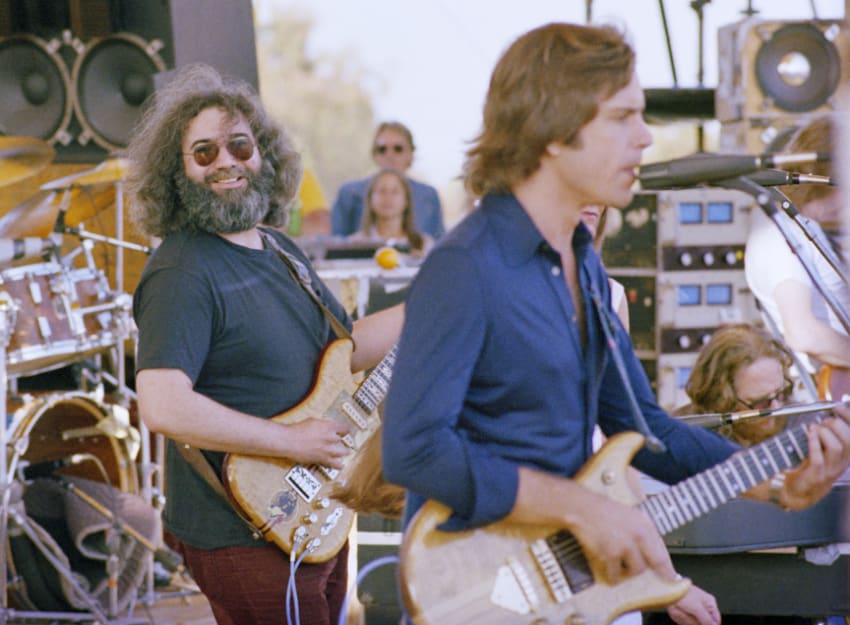
Photo from 'Eyes Of The World' © steve schneider_01
JamBase: Okay, one last question for you and again, I don’t mean to keep leaning into these nosey topics, but could you describe the process for what it takes to secure the rights to use these images?
Josh: I’ll be honest, we had to do this on essentially what we described as an honorarium. A lot of these photographers could have demanded a lot more, but think about it, there are 220 images. How could we possibly afford to make that happen and people wanted this book to get out there? We really just told them the concept behind the project and said, “This can really only happen if we do it this way.”
We basically would tell each photographer, “Listen, these other photographers said yes at this rate” and let them know guys like Jay Blakesberg and Herbie Greene were on board and then almost everyone agreed to a one time use for up to 10,000 copies. It was pretty simple. We sent them a short – I guess you could call it a contract – really quick agreement stating the terms and saying we can use the image.
